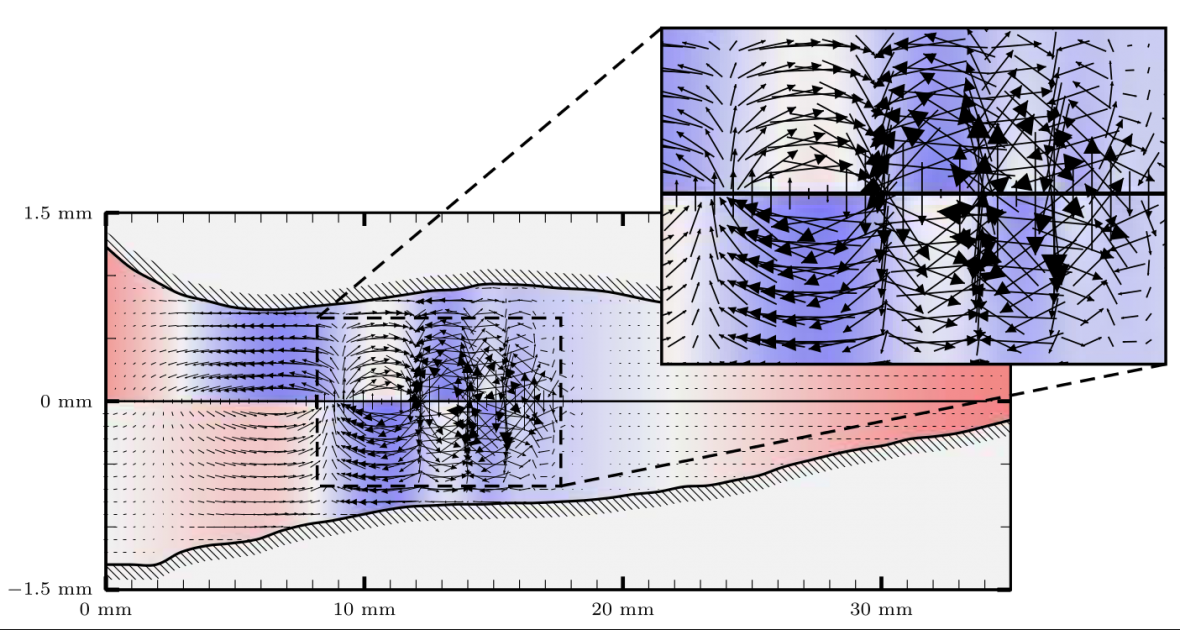Numerical Simulation of Acoustically Driven Flows in the Inner Ear
Christian Gerstenberger, Leibniz Universität Hannover
An acoustically driven flow (also called as acoustic streaming) is a mean motion generated by sound waves. So, also the sound field in the inner ear is capable of inducing mean motions. But the existence and relevance of acoustically driven flows for the mechanical processes in the cochlea has remained controversial. Nowadays, it is commonly assumed that the relevance of acoustic streaming is only significant for very high sound pressure levels larger than 120dB. An experimental examination of the influence of acoustic streaming in the inner ear (and especially in the organ of corti) has not yet been possible, since on the one hand the cochlea is not directly accessible and on the other hand the induced mean motion is comparatively slow.
To investigate the influence of acoustically driven flows in the inner ear, the object of research is to develop an appropriate computational model, which can be studied in a simulation process. The model is intended to verify, whether a significant mean flow occurs and the simulation should estimate and evaluate the order of magnitude of such mean motions. The purpose of such investigation is motivated by the fact that (even small) deflections of the stereocilias of the hair cells – which can also be caused by mean streaming motions – are responsible either for the neural stimulation process (inner hair cells), or for the active amplification process of the basilar membrane motions (outer hair cells).




